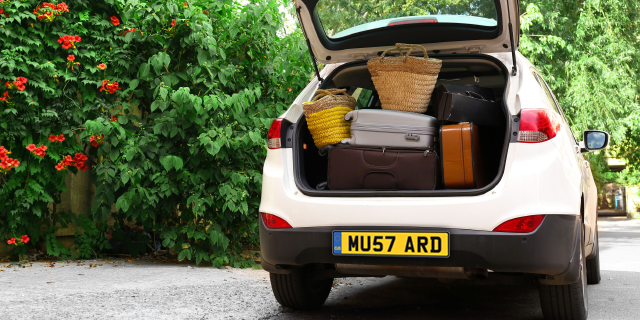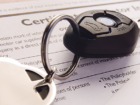Taking the car abroad can be a daunting prospect – even if you’re a confident driver, tackling the other side of the road, abiding by a whole new set of different driving laws and indeed coping with differing local driving styles can be scary. However, it can also be exciting and add a new dimension to your holiday or business trip.
Driving abroad is also complicated further by Brexit, which changed the agreements the UK had with some countries allowing frictionless travel.
Read on to find out what you need to know about driving in Europe.
Can I drive my car in Europe?
The good news is yes. Even post-Brexit, most UK drivers can still drive in EU countries, Switzerland, Norway, Iceland or Liechtenstein using their regular licence, insurance, and paperwork.
The exception is if you only have a paper rather than a photocard licence, or if your licence was issued in Gibraltar, Guernsey, Jersy or the Isle of Man.
If you fall into one of these groups you should check with the embassy of the country you’re visiting whether you need an International Driving Permit, or IDP.
Applying for an IDP is easy – it costs £5.50 and can be done from a Post Office. There are three different types that cover different countries, though, so make sure you’re getting the right kind.
What driving documents do I need to take to Europe?
You should have the following documents to hand – consider getting a folder and keeping them tidy in the glovebox.
- Your valid, full UK driving licence
- Your driving record – you can access this here and it’s best to print out the PDF copy
- Your car’s V5C registration document, or –
- A VE103 form if you’ve borrowed or hired your car
- Your car insurance certificate
- Your passport or Visa if needed
- Travel insurance details
As of June 2021, there’s no longer any need to present a driving insurance green card while travelling in Europe.
What else do I need to drive in Europe?
There are a few on-the-road essentials that you’d be very well advised to bring with you while travelling in Europe. Some of these requirements vary by country, but as none of them are very expensive to buy in the first instance it’s better safe than sorry. As always, make sure your vehicle is taxed, properly registered and has a valid MOT, as well as being in good working order with all tyres in good condition.
- A GB sticker – if your car doesn’t have Euro-style number plates with a GB designation on them. From 28 September 2022 these will be replaced with stickers that say ‘UK’, so you’ll need one even if your plate has GB on it
- A reflective vest for every occupant of the car, accessible from within the passenger compartment
- A hazard warning triangle
- Beam adaptors – apply these before driving at night in a left-hand drive country to avoid dazzling oncoming motorists
- A breathalyser kit
- A comprehensive first aid kid

Other things that aren’t legal requirements, but are nonetheless extremely useful to have, include:
- A fire extinguisher
- Replacement bulbs for your head and taillight
- A spare fuel can
- Spare oil and water
- Charging cables – always pack extra!
- Refreshments and lots of water
- Suncream
- A ‘dumb’ GPS or old-school map book, in case you’re in an area with poor phone signal
What about low-emission zones?
Some European cities have introduced low-emission zones (LEZs) in a bid to cut congestion and pollution by deterring the most polluting vehicles.
There are more than 200 cities across Europe with these zones in, and each have different rules about what vehicles are allowed in and which ones attract penalties. Where possible, plan your route in advance so you know what you’re going to hit and when. You can find out more about Low Emission Zones here.
Car insurance for driving abroad
Checking whether your existing policy covers you for driving in Europe should be number one on your holiday checklist.
If your policy does cover you, bear in mind that you may not automatically receive the same level of insurance while you’re away.
For example – just because you have a comprehensive policy in the UK, doesn’t mean you’ll get comprehensive cover abroad. In many cases your insurer will only compensate you for third-party cover level damage, meaning that you’ll need to pay for your own repairs if you’re involved in an accident.
If you’re worried about this, then you can usually ask your insurer to increase your protection, but you’ll probably have to pay a bit more for this.
If your current policy doesn’t include EU cover, then you can find stand-alone policies.
Whether you’re already insured or need to look for a separate policy, consider:
- How long you’ll be travelling for
- If your insurer has an emergency 24-hour helpline
- Whether your insurer will compensate you for emergency overnight stays if your car breaks down and can’t be repaired quickly
- Whether your policy covers you for the countries you’ll be driving in
Getting a Green Card
If you’re only driving in Europe and EEA countries you won’t need a Green Card. However, it’s worth knowing that it’s an internationally recognised document that proves you have appropriate car insurance. It’s designed to be a quick and efficient way of processing and settling claims.
If you plan on venturing further afield, you can ask your insurer to provide you with one free of charge.
Why search for car insurance with mustard.co.uk?
With mustard.co.uk, searching for cover that suits your needs is simple, quick and easy, find a policy online TODAY!








